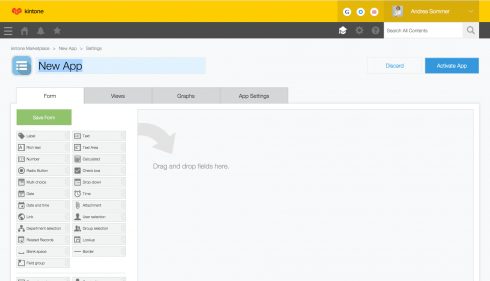
Low-code solutions are often viewed as a means for non-technical people to create line-of-business applications and as a way for developers to create custom solutions that solve specific business needs. An example offered in the first of this series of articles described a restaurant owner who needed a unique software development solution for food purchasing or managing changes to online menus.
While low-code platforms do offer this, they have another advantage: acting as a guideline for development teams creating custom software solutions.
Calabash, a process consulting firm founded by John Bratincevic and Matthew Hubbard, uses Kintone’s low-code platform to create those custom solutions. Through Kintone, the company can quickly create visual prototypes that can be updated and modified with new input or feedback.
In an interview with SD Times, Bratincevic described working with an oil and gas company that tried to apply a manufacturing solution for its operations, but it wasn’t a fit. He was able to put a roadmap together for the company using a low-code platform and created a more suitable solution that squarely addressed the company’s need.
Hubbard added, “Where I find low-code is especially helpful is when the business hasn’t had a system before for their process, and they really don’t know what their process would look like in a system. Low code helps them kind of figure out what the process should be and how that translates into a system.”
Creating a prototype
For businesses that need these custom solutions, low-code platforms provide an intuitive, visual, drag-and-drop UI that makes them easy to use, and provides the ability for organizations to create a prototype of what their business processes might look like.
“We did that with a customer recently,” Hubbard said. “Within a matter of one week, we made a prototype of what the person was describing…and then they used the prototype to demonstrate to their IT and to their continuous improvement leadership where they’d like to go. And that helped align everyone.”
Because of the ease of use of these platforms, the complexity of continuously improving processes and applications is reduced. A Forrester Wave report on low-code solutions from 2017 noted that these platforms enable the building of systems and processes that are adaptable to changes in the business or to meet new opportunities without a major overhaul. This, in turn, is powering the digital transformation of businesses, making them more efficient, agile and responsive.
“Our vision for how something like Kintone might be used, like, I’m a new employee at a company. On my first day, I get my laptop, it’s got Windows on it, it’s got my email, it’s got my log-in to all my enterprise systems … and it has my developer license for Kintone … So I don’t defer necessarily to a spreadsheet to solve all my problems, or an Access database if I’m slightly more technical, I start with something that’s mobile-capable, something that’s online, something that has communication workflow features like automated email and so on. The power of that, at scale in a company, is just nuts.”
A game-changer
In traditional business environments, developers can create applications, but don’t necessarily have a thorough understanding of business goals and needs. On the other side, business people know what they need, but can’t create it themselves. They’ve had to try to communicate their need to the developers, and the requirements often are misunderstood. The final result ends up not being what the business needed – or took so long to complete that the needs of the business have changed.
So, having developers create these custom platforms for their organizations, and then putting the tools to create solutions into the hands of business people, is a game-changer.
“People with deep business expertise, now combined with the ability to actually make applications as easily as you can with some of these platforms, there’s been nothing like it ever before,” Bratincevic said. “Combining these two traditionally different disciplines into one is extremely powerful.”
To learn more, visit www.kintone.com
Content provided by SD Times and Kintone.






